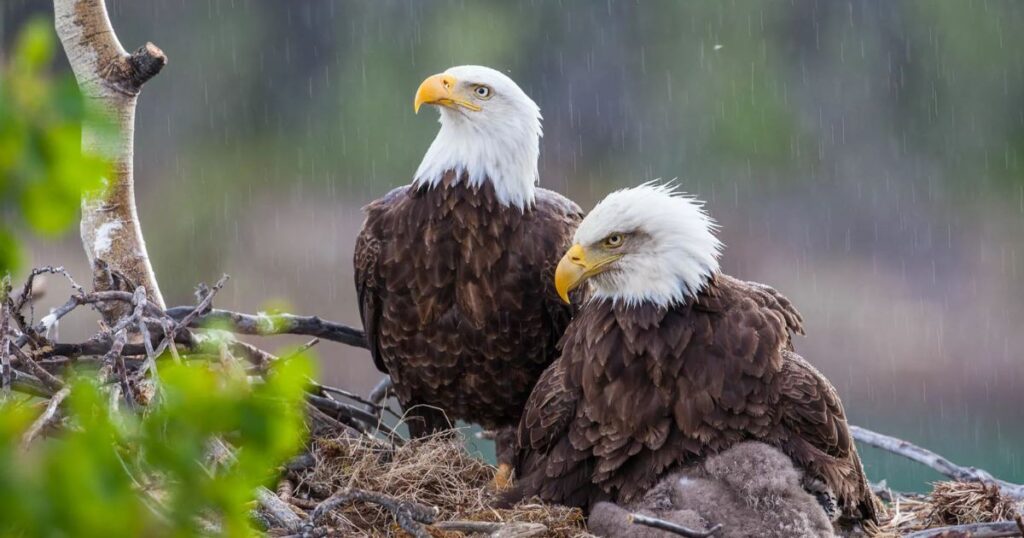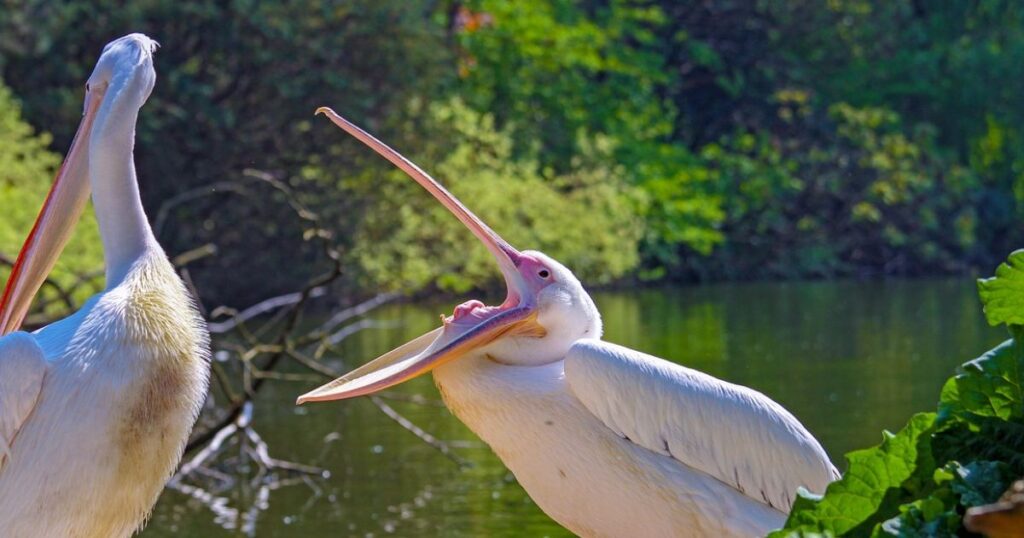Welcome to the enchanting world of Hancock Birds, where nature’s melody meets cultural significance. In this comprehensive guide, we’ll explore the diverse avian life that calls Hancock home, delve into wildlife conservation efforts, and uncover the fascinating interplay between these feathered wonders and human society. Get ready to spread your wings and soar through a landscape rich in nature and culture.
Introduction to Hancock’s Avian Diversity
Hancock isn’t just a place; it’s a bustling metropolis for our feathered friends. From the treetops to the shorelines, this region boasts an impressive array of bird species that have captured the hearts of bird enthusiasts and casual observers alike.
Geographic Location and Habitat Types
Hancock’s unique geography creates a perfect storm of biodiversity. Nestled between lush forests and sprawling wetlands, this area offers a smorgasbord of habitats for birds. The region’s varied landscape includes:
- Dense woodlands teeming with songbirds
- Expansive marshes hosting waterfowl
- Rocky cliffs providing nesting sites for raptors
- Open fields where grassland species thrive
This diverse tapestry of ecosystems makes Hancock a hotspot for bird species diversity and a crucial area for wildlife conservation.
Notable Bird Species in Hancock
Hancock’s skies are graced by an impressive roster of avian celebrities. Here’s a taste of what you might spot:
- The majestic Bald Eagle, a symbol of American pride
- The melodious Wood Thrush, with its flute-like song
- The vibrant Scarlet Tanager, a flash of red in the forest canopy
- The elusive Great Horned Owl, master of the night
Each of these species plays a vital role in the ecosystem and contributes to the rich tapestry of bird symbolism in local culture.
A Vanguard of Avian Conservation
The beauty of Hancock’s birds isn’t just skin-deep. These creatures are at the heart of crucial conservation efforts that span from local initiatives to global movements.
Bald Eagle Conservation Efforts

Once teetering on the brink of extinction, the Bald Eagle has made a remarkable comeback, thanks in large part to dedicated conservation work. The Hancock Wildlife Foundation (HWF), founded by David Hancock, has been at the forefront of bald eagle conservation.
Their efforts include:
- Protecting nesting sites
- Monitoring eagle populations
- Educating the public about eagle conservation
These initiatives have not only boosted eagle numbers but have also become a model for wildlife preservation worldwide.
Wildlife Habitat Stewardship
Conservation isn’t just about the birds; it’s about preserving their homes too. Habitat stewardship programs in Hancock focus on:
- Restoring degraded ecosystems
- Creating buffer zones around sensitive habitats
- Promoting sustainable land-use practices
These efforts ensure that Hancock’s birds have safe places to nest, feed, and raise their young, supporting the delicate balance of nature.
Raptor Rehabilitation and Care
When birds of prey find themselves in trouble, Hancock’s raptor rehabilitation programs swoop in to save the day. These programs provide:
- Medical care for injured raptors
- Rehabilitation facilities for recovery
- Release programs to return healed birds to the wild
This work not only saves individual birds but also contributes valuable data to scientific study of raptor species.
Live Eagle Cams
Technology meets nature with Hancock’s famous live eagle cameras. These cameras offer:
- Real-time views of eagle nests
- Educational insights into eagle behavior
- Opportunities for public engagement in conservation
By bringing the beauty of eagles into homes worldwide, these cameras foster a deep connection between humans and wildlife.
Urban Wildlife Adaptation and Coexistence
As urban areas expand, Hancock’s birds are learning to adapt. This bird species adaptation showcases the resilience of nature and provides unique opportunities for human interaction with wildlife in urban settings.
Read Also: The Ultimate Guide to Coomer Parties
Engagement and Education: Building a Conservation Community
Knowledge is power, especially when it comes to protecting our feathered friends. Hancock’s educational initiatives are turning casual bird watchers into passionate conservationists.
Avian Conservation Education
From classrooms to field trips, educational programs on wildlife are inspiring the next generation of bird advocates. These programs include:
- School visits from wildlife experts
- Hands-on learning experiences in nature
- Interactive workshops on bird identification and conservation
By fostering a love for birds early on, these programs ensure a bright future for avian conservation.
Wildlife Online Streaming and Outreach
In the digital age, conservation has gone virtual. Online programs and streaming services offer:
- Live webinars with bird experts
- Virtual bird-watching tours
- Interactive Q&A sessions about local bird species
These initiatives bring the wonders of Hancock’s birds to a global audience, promoting environmental awareness on an unprecedented scale.
Eco-tourism and Bird Watching
Hancock has become a mecca for bird enthusiasts, offering world-class opportunities for bird photography and observation. Popular activities include:
- Guided bird-watching tours
- Photography workshops focused on avian subjects
- Seasonal festivals celebrating bird migration
This eco-tourism not only boosts the local economy but also reinforces the importance of preserving natural habitats for birds.
The Legacy of David Hancock and Future Directions
David Hancock‘s vision has shaped Hancock’s approach to bird conservation for decades. His work continues to inspire new generations of conservationists and researchers.
David Hancock’s Contributions
David Hancock’s legacy includes:
- Pioneering studies on Bald Eagle behavior
- Establishing the Hancock Wildlife Foundation
- Advocating for stronger wildlife protection laws
His work has set the standard for wildlife advocacy and conservation practices worldwide.
Conservation Technology Innovations
The future of bird conservation in Hancock is high-tech. Innovations include:
- GPS tracking of migratory birds
- Drone surveys of hard-to-reach habitats
- AI-powered bird identification apps
These technological advancements are revolutionizing our understanding of bird behavior and migration patterns.
A Call to Action
Everyone can play a role in protecting Hancock’s birds. Here’s how you can get involved:
- Volunteer for local conservation projects
- Support wildlife organizations through donations
- Practice responsible bird-watching techniques
By working together, we can ensure a bright future for Hancock’s avian residents.
Impact of Environmental Changes
Climate change and habitat loss pose significant challenges to Hancock’s birds. Understanding these impacts is crucial for developing effective conservation strategies.
Habitat Conservation Strategies
To combat bird habitat loss, Hancock employs various strategies:
- Creating protected areas for critical habitats
- Restoring degraded ecosystems
- Implementing sustainable forestry practices
These efforts aim to preserve the diverse landscapes that Hancock’s birds call home.
Migration Mysteries Explored
Bird migration patterns are changing in response to environmental shifts. Researchers in Hancock are studying:
- Alterations in migration timing
- Changes in stopover site usage
- Impacts of climate change on migratory routes
This research is vital for predicting future challenges and adapting conservation efforts accordingly.
Tracking Technologies and Findings
Cutting-edge tracking technologies are shedding new light on bird behavior. Recent findings include:
- Long-distance migrations previously unknown
- Unexpected stopover sites
- Complex social interactions during migration
These discoveries are reshaping our understanding of avian life and informing conservation practices.
Conservation Implications
The insights gained from studying Hancock’s birds have far-reaching implications for global conservation efforts. They highlight the interconnectedness of ecosystems and the need for coordinated international action to protect migratory species.
HWF’s Role in Global Conservation Efforts
The Hancock Wildlife Foundation’s impact extends far beyond local borders, contributing to global wildlife impact through various initiatives.
Legislation and Advocacy
HWF works tirelessly to influence policy and legislation related to bird protection. Their efforts include:
- Lobbying for stronger environmental protections
- Providing expert testimony in legal proceedings
- Collaborating with policymakers on conservation initiatives
This work ensures that the needs of birds are represented in decision-making processes at all levels.
International Collaboration
Birds know no borders, and neither does conservation. HWF participates in international efforts such as:
- Global bird monitoring programs
- Cross-border habitat protection initiatives
- Sharing of best practices in bird conservation
These collaborations foster a united front in the face of global environmental challenges.
Public Engagement and Education
Engaging the public is crucial for long-term conservation success. HWF’s outreach programs include:
- Community science initiatives
- Public lectures and workshops
- Social media campaigns to raise awareness
By turning wildlife fans into active conservationists, HWF multiplies its impact many times over.
Birdwatching Hotspots in Hancock

For those eager to experience Hancock’s avian wonders firsthand, the region offers numerous birdwatching opportunities.
Parks and Nature Reserves
Hancock’s protected areas are treasure troves for bird enthusiasts. Popular spots include:
- Hancock State Park, known for its diverse woodland species
- Lakeshore Nature Preserve, a haven for waterfowl
- Hillside Meadows, where grassland birds abound
Each location offers unique opportunities to observe birds in their natural habitats.
Seasonal Migratory Patterns
Understanding the rhythms of bird migration can enhance your birdwatching experience. Key seasons include:
- Spring: Watch for returning warblers and other songbirds
- Summer: Observe nesting behaviors of resident species
- Fall: Witness the spectacular southward migration of raptors
- Winter: Spot hardy year-round residents and winter visitors
Each season brings its own cast of avian characters to Hancock’s stage.
Read Also: How Tall Is Clix?
Conclusion
From the soaring Bald Eagles to the tiniest warblers, Hancock’s birds weave a rich tapestry of life that captivates and inspires. Through conservation efforts, scientific study, and public engagement, we’re ensuring that future generations will continue to enjoy the wonder of these feathered marvels.
As we’ve explored, the cultural significance of birds extends far beyond their ecological roles. They are symbols of freedom, wisdom, and the enduring spirit of nature. By protecting Hancock’s birds, we’re not just preserving species; we’re safeguarding a piece of our natural and cultural heritage.
Whether you’re a seasoned ornithologist or a casual backyard bird watcher, there’s always more to discover in the world of Hancock’s birds. So grab your binoculars, step outside, and let the avian wonders of Hancock inspire you. After all, in the words of John James Audubon, “A true conservationist is a man who knows that the world is not given by his fathers, but borrowed from his children.”
Remember, every time you look to the skies, you’re witnessing a living legacy one that deserves our admiration, our study, and above all, our protection. The birds of Hancock are counting on us to keep their song alive for generations to come.
Frequently Asked Questions
What bird is in Hancock movie?
There is no specific bird in the Hancock movie. The name “Hancock” refers to the main character, a superhero played by Will Smith.
Is a hancock a bird?
Hancock is not a bird. It’s a surname and the title character of the movie.
Who is king of all birds?
The eagle is often considered the “king of birds” in many cultures due to its strength and majestic appearance.
Who is queen of birds?
The peacock is sometimes referred to as the “queen of birds” because of its beautiful, colorful plumage.
Is Hancock stronger than his wife?
In the movie, Hancock and his wife are equally strong when apart, but become vulnerable when near each other.
Is Hancock a devil fruit?
Hancock is not a devil fruit. Devil fruits are from the One Piece anime/manga series, unrelated to the Hancock movie.
Richard is a tech aficionado with a keen eye for the latest trends and innovations. At groovymode.com, he delivers expert analysis and insightful reviews to keep you informed and ahead in the tech world.